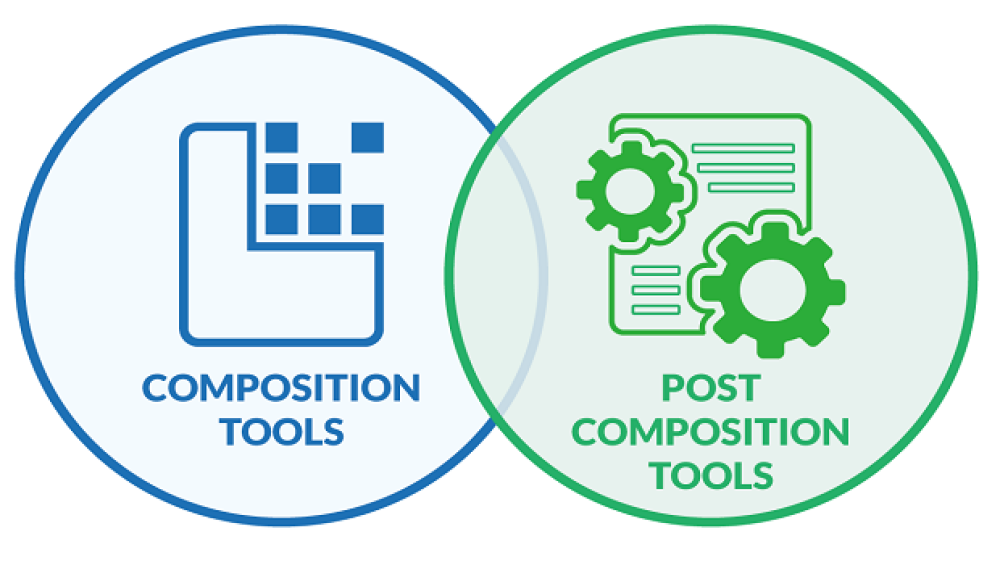Post-Composition: From Middleware to Mission Critical for CCM
19 Feb 2018

Customer Communications Management (CCM) is a topic we talk about a lot inside mid-size and large organisations. The driver of these conversations is the necessity to create, produce, deliver, track and report on high amounts of communications going out of an organisation to their customers. Communications that can be informational or promotional in nature, critical billing and notices or regulated communications by the government or other bodies. Why do we talk about CCM? It is a topic of conversation because it is the mission critical process for how communications get created, organised and sent out of an organisation. It also incorporates the processes that inform the management on the results; success or failure. In many cases, the workflows that make up your CCM process and strategy are also directly related to the archival of communications and the access to those communications for legal and customer service activities. As part of CCM, there are three major components: composition, production and delivery and output management. Composition is generally made up of tool sets that handle enterprise levels of data and templated layouts for mass communications. Production and delivery is the process of producing printed documents, electronic communications and the fulfillment of them into the delivery stream whether that be mail, email, SMS or other app or mobile-based delivery. Output management is where the rubber meets the road; it is the manual and automated processes that control the progression after composition and through to final delivery. Post-composition software lives in this output management space of CCM. The role of post-composition is to sit between processes and define a workflow while adding enhancement capabilities and reporting. In addition, it adds significant value to legacy composition systems and the communications they have created. By giving IT, and their colleagues in other departments, an ability to change and/or enhance the legacy communication, organisations can realise colour, TransPromo, redaction of information and innovative customer experience additions like Augmented Reality (AR). However, in this post, we are going to focus on the tension between composition and post-composition tools and why post-composition has a critical role to play in CCM. For a long time, there has been a competition between the start of the communication process, composition, and the downstream tools and processes of post-composition. Many have viewed post-composition as a necessary evil – a point solution thought of as middle-ware – that is being used as a stop gap measure. And if only the upstream composition tools were better, they wouldn’t need to re-engineer the data streams after the initial composition. For many customers, that sounds like it should be a goal to shoot for, but the realities of everyday business means there are always forces creating the need for immediate change. Adding to that, most composition solutions can do similar things to a post-composition solution, such as: - Composition or re-composition of a communication (Print or Electronic) - Formatting for specific output devices such as printers and mailing inserters - Formatting for specific post-processes such as imposition - Postal and output processing such as address cleansing and house-holding - Electronic and mobile communications composition and delivery - Tracking and reporting of the communications process - Addition of value-add content and innovative technology such as personalised video, augmented reality (AR) and Transpromo. This overlap adds confusion to the conversation. Both composition and post-composition solutions can achieve any of the above, but the challenge for organisations is how quickly it can be done and what effects will it have on other processes. The reality of frequent change in the print and mail environment means that there are many situations in which one needs to adapt to new requirements. This is the fork in the road. This is why post-composition should be thought of and treated as a mission critical part of a customer communications workflow. As composition systems continue to evolve, and we have come a long way from CompuSet, Documerge or homegrown mainframe systems, the one thing they can’t account for is the point of the process where you need to modify a communication. Most systems use templates and they have ripple effects downstream if you change them (think about the complex logic involved)—requiring approval processes and people who know the composition system like the back of their hand. Post-composition takes risk out of urgent changes, composition that is misaligned with a workflow and lets communications be enhanced with innovative ideas at the speed of today’s communications. We are a world that expects instant communications that are relevant and valuable and post-composition is a must have tool that makes that happen. Consider these strategic differences between composition and post-composition: - When created in composition, the logic is generally incorporated by IT in the design phase. - When created in post-composition, decisions are made at production time by operations personnel. The significance here is that critical changes to customer communications happen on the production floor with the operations management, which is where post-composition thrives. As you look at where you can foster change and flexibility in your organisation, also consider the value of being able to try new innovations like adding augmented reality while A/B testing to see what provides the best customer experience. Post-composition provides that kind of flexibility, where upstream, there are a lot more factors that can be affected by that type of program switch up. And again, lots of approval requirements due to the ripple effect and limited staff that can typically code the composition system.





Please login to comment.
Comments